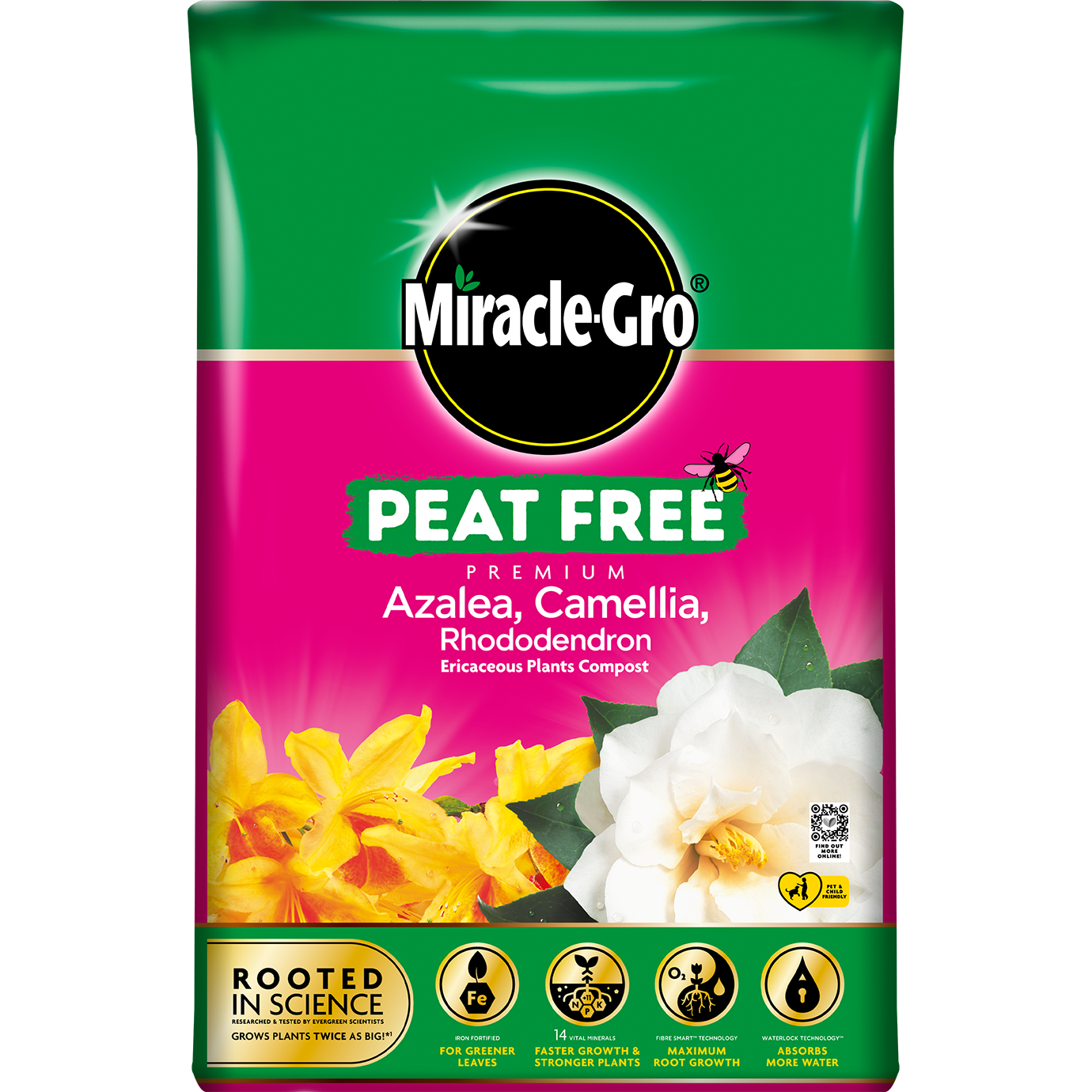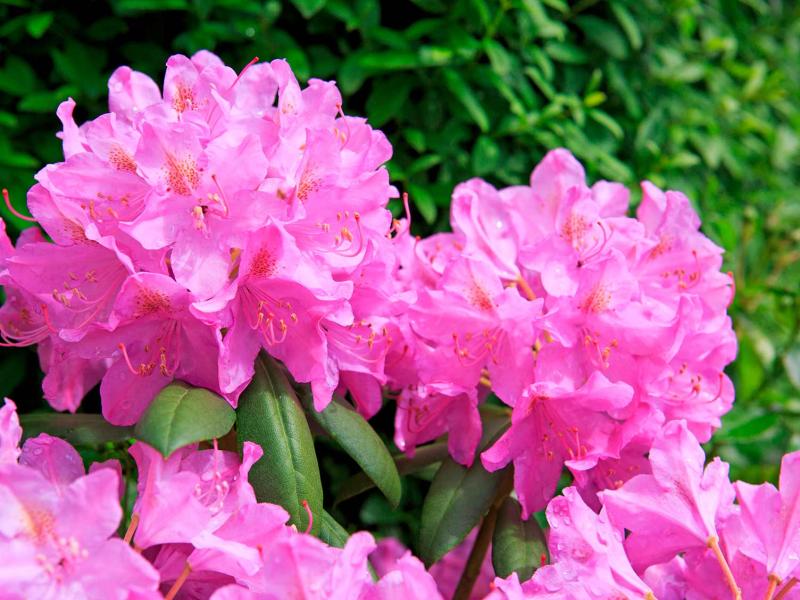Growing Ericaceous Plants: A Complete Guide
Growing Ericaceous Plants: A Complete Guide
Ericaceous plants are a group of flowering plants that thrive in acidic soil. They include some of the most popular garden plants, such as rhododendrons, azaleas, and camellias. If you're thinking of adding ericaceous plants to your garden, there are a few things you need to know to ensure their success.
In this guide, we'll cover everything you need to know about growing ericaceous plants, from choosing the right soil to watering and fertilizing. We'll also provide tips on how to protect your plants from pests and diseases.
Soil
The most important factor for growing ericaceous plants is the soil. Ericaceous plants need acidic soil with a pH of between 4.5 and 6. If your soil is alkaline, you'll need to amend it with peat moss or sulfur to lower the pH.
You can test the pH of your soil using a simple pH testing kit. These kits are available at most garden centers.
If you're planting ericaceous plants in a pot, you can use a commercial ericaceous potting mix. These mixes are already acidic and will provide your plants with the nutrients they need.
Sunlight
Most ericaceous plants prefer partial shade. Too much direct sunlight can scorch their leaves. However, some ericaceous plants, such as rhododendrons, can tolerate full sun if they are given plenty of moisture.
When choosing a planting location, consider the amount of sunlight the area receives. If you live in a hot climate, you may want to plant your ericaceous plants in a spot that gets morning sun and afternoon shade.
Watering
Ericaceous plants need regular watering, especially during the hot summer months. Water your plants deeply and infrequently. This will help to prevent the soil from becoming compacted, which can prevent the roots from getting the oxygen they need.
If you live in an area with dry summers, you may need to water your ericaceous plants more frequently. Mulching around your plants can help to retain moisture in the soil.
Fertilizing
Ericaceous plants need to be fertilized regularly, especially during the spring and summer when they are actively growing. Use a fertilizer that is specifically formulated for acid-loving plants.
You can also fertilize your ericaceous plants with organic matter, such as compost or leaf mold. These materials will help to improve the acidity of the soil and provide your plants with the nutrients they need.
Pests and Diseases
Ericaceous plants are susceptible to a few pests and diseases, but they are generally easy to care for. Some of the most common pests that attack ericaceous plants include aphids, scale insects, and spider mites. These pests can be controlled with insecticidal soap or neem oil.
Ericaceous plants can also be susceptible to a few diseases, such as leaf spot and root rot. These diseases can be prevented by planting your ericaceous plants in well-drained soil and watering them properly.
With proper care, ericaceous plants can thrive in your garden for many years. By following the tips in this guide, you can enjoy the beauty of these plants for years to come.
Ericaceous plants are those that prefer acidic soil, with a pH of 4.5 to 6. They include a wide variety of plants, such as rhododendrons, azaleas, heathers, and blueberries. These plants are often found in bogs and other acidic environments.
If you are interested in growing ericaceous plants, it is important to make sure that your soil is acidic. You can do this by testing the soil pH with a kit from your local nursery. If your soil is too alkaline, you can add peat moss or sulfur to lower the pH.
You can also find a wide variety of ericaceous plants at Garden Wiki. This website has a large selection of plants, as well as information on how to care for them.
FAQ of ericaceous
- What is ericaceous?
Ericaceous plants are those that prefer acidic soil. They include a wide range of plants, such as rhododendrons, azaleas, heathers, and blueberries. These plants need soil with a pH of 4.5 to 6.5 in order to thrive.
- What is ericaceous compost?
Ericaceous compost is a type of compost that is specifically designed for ericaceous plants. It is made from materials such as pine bark, leaf mold, and peat moss, which are all acidic. Ericaceous compost can be purchased from garden centers or made at home.
- How do I care for ericaceous plants?
Ericaceous plants need to be watered regularly, especially during the growing season. They also need to be fertilized with an acidic fertilizer once a month during the growing season. Ericaceous plants should be planted in a location that receives partial shade.
- What are some common problems with ericaceous plants?
Some common problems with ericaceous plants include chlorosis, leaf scorch, and root rot. Chlorosis is a condition that causes the leaves of ericaceous plants to turn yellow. It is caused by a lack of iron in the soil. Leaf scorch is a condition that causes the leaves of ericaceous plants to dry up and turn brown. It is caused by too much sunlight or heat. Root rot is a condition that causes the roots of ericaceous plants to decay. It is caused by too much water or poor drainage.
- How can I prevent problems with ericaceous plants?
You can prevent problems with ericaceous plants by planting them in the right location, watering them regularly, and fertilizing them with an acidic fertilizer. You should also avoid planting ericaceous plants in areas where the soil is alkaline.
Image of ericaceous
- Azaleas are a type of ericaceous plant that are known for their colorful flowers. They are often used in gardens and landscaping.

- Camellias are another type of ericaceous plant that are known for their beautiful flowers. They are also often used in gardens and landscaping.

- Rhododendrons are a type of ericaceous shrub or small tree that are known for their showy flowers. They are often found in woodland areas.

- Heather is a type of ericaceous shrub that is known for its purple or pink flowers. It is often found in moorland areas.
- Vinca is a type of ericaceous groundcover plant that is known for its blue or purple flowers. It is often used in gardens and landscaping.

Post a Comment for "Growing Ericaceous Plants: A Complete Guide"